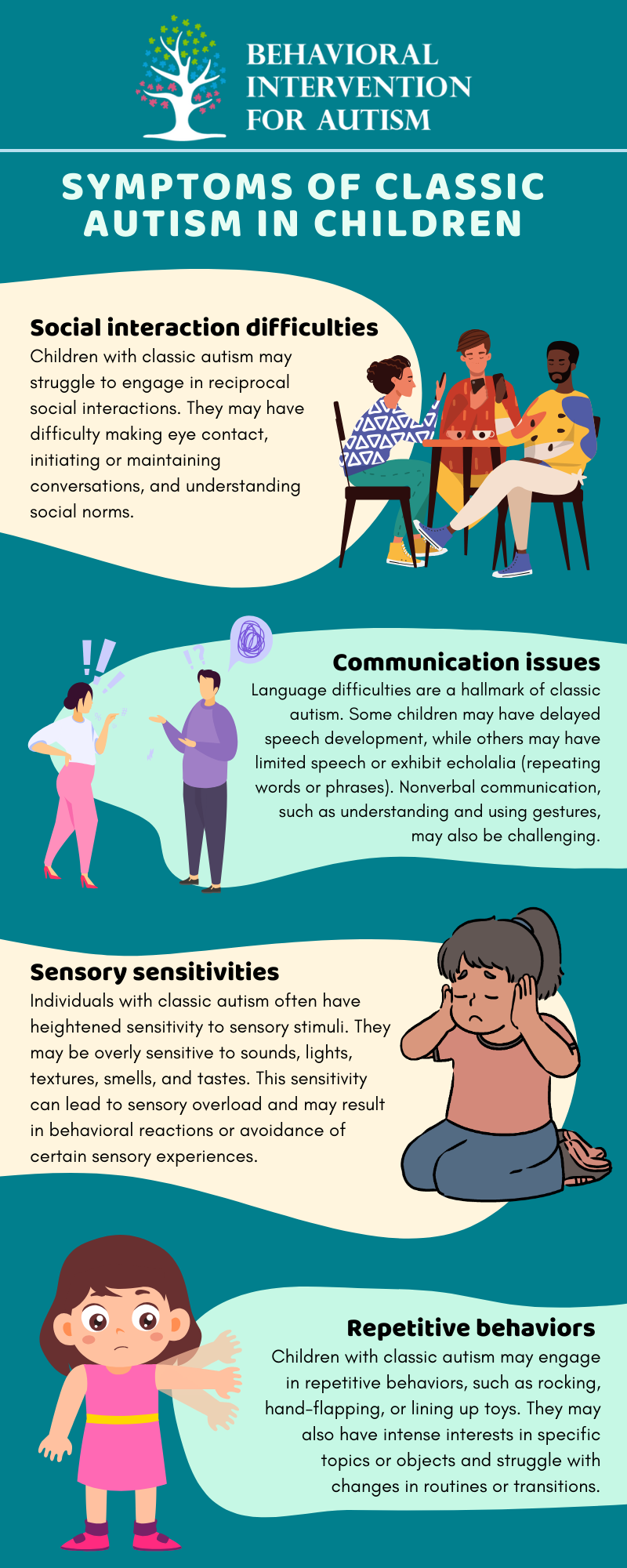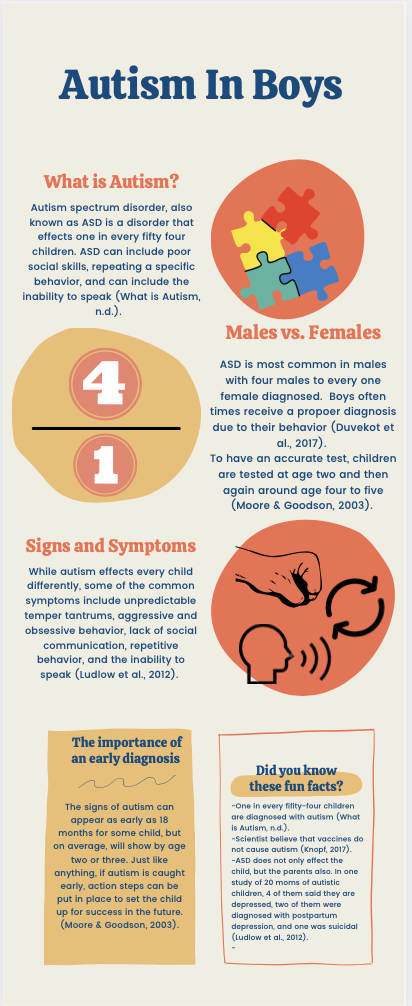Best practices for building sensory-friendly spaces with advice from an Autism Therapist
Best practices for building sensory-friendly spaces with advice from an Autism Therapist
Blog Article
Recognizing the Effect of Behavioral Autism on Every Day Life and Social Communications
You may not understand how deeply behavior autism influences every day life and social communications. Individuals on the spectrum often browse a world loaded with interaction obstacles and sensory overload. These obstacles can result in frustration and seclusion, influencing their partnerships and general well-being. Understanding these nuances is essential for promoting supportive settings. What approaches can we implement to create more significant connections and comprehensive rooms? The responses may amaze you.
Specifying Behavioral Autism and Its Qualities
Behavior autism, usually described as autism spectrum disorder (ASD), incorporates a range of conditions characterized by difficulties in social interaction, interaction, and repeated actions. You may notice that people with ASD commonly struggle to translate social cues, which can bring about misunderstandings in discussions. They may find it difficult to develop eye contact or participate in tiny talk, making social situations really feel overwhelming.
Communication troubles can manifest in different means, from delayed speech advancement to a choice for using fewer words. Recurring behaviors, such as hand-flapping or rocking, can work as coping mechanisms to manage anxiety or sensory overload. These features can exceptionally affect everyday life, making it important for you to recognize and support those with ASD. By acknowledging these attributes, you can foster an atmosphere that promotes approval and urges effective communication, assisting people with autism grow in their daily interactions.
The Range of Autism: Comprehending Irregularity in Behavior
Autism spectrum problem (ASD) isn't a one-size-fits-all medical diagnosis; it varies widely among individuals. You might come across individuals who are highly verbal and involve quickly in conversations, while others may favor singular tasks or connect non-verbally.
Furthermore, the way individuals with ASD reply to sensory input can differ greatly; some could be overwhelmed by bright lights or loud sounds, whereas others prosper in stimulating settings. The spectrum additionally includes distinctions in social interactions; some people might have a hard time to interpret social signs, while others browse social settings with family member ease. Recognizing this irregularity is crucial, as it aids you value everyone's unique experience and tailor assistance to their specific requirements, cultivating a more inclusive setting for every person.
Communication Obstacles Faced by People With Autism
When you communicate with people on the autism spectrum, you may see their distinct interaction challenges. They frequently face problems with both nonverbal and verbal hints, which can influence their social interactions. Understanding these barriers is crucial for fostering far better links and support.

Verbal Communication Problems
Several individuals on the autism spectrum experience spoken communication troubles that can considerably affect their day-to-day communications. You could find it testing to share your ideas, sensations, or needs plainly. This can result in disappointment for both you and those around you, as misconceptions occur. You may have problem with starting conversations, keeping a subject, or comprehending nuances in speech. Typically, you might favor using basic language or recurring phrases, which can limit your ability to take part in much deeper discussions. Your quantity, tone, or speed might not straighten with social assumptions, triggering others to misunderstand your purposes. Acknowledging these difficulties can assist you and your support network establish approaches to improve interaction and foster far better connections with others in your life.
Nonverbal Communication Barriers
Spoken communication isn't the only challenge people on the autism spectrum face; nonverbal interaction barriers can be simply as significant. You could find it challenging to analyze body movement, faces, and eye call, which are crucial for reliable communication. These challenges can result in misconceptions or misconceptions of social cues, making communications feel complex or overwhelming. You might struggle to share your own feelings through nonverbal methods, leaving others uncertain of your sensations or intents. This disconnect can produce feelings of seclusion and stress. Identifying these obstacles is crucial for fostering understanding and empathy in your communications. By attending to nonverbal interaction, you can locate strategies to enhance your social experiences and improve your general lifestyle.
Social Communication Influences
Social interactions can usually really feel frustrating as a result of the unique communication difficulties encountered by people with autism. You could battle with interpreting social cues, making it difficult to comprehend sarcasm or body language. This can cause misconceptions or unpleasant minutes in discussions. Additionally, launching and keeping discussions may feel challenging, causing stress and anxiety in social circumstances. You may choose structured atmospheres, making spontaneous interactions unpleasant. It's likewise typical to experience trouble in participating in tiny talk, which can hinder forming new relationships. Recognizing these difficulties can help you discover techniques to enhance communication, such as exercising social abilities in safe setups or making use of aesthetic aids - Aba Therapist Near Me. Recognizing your requirements allows you to browse social interactions with greater self-confidence and ease.
Social Communication and Connection Structure in Autism
While building relationships can be challenging for people with autism, recognizing their distinct perspectives and interaction designs can promote purposeful connections. You could discover that several individuals on the spectrum choose straight communication and may fight with social hints or tiny talk. By being simple in your communications, you can help produce an environment where they feel comfy.
Take the time to listen and observe exactly how they reveal themselves. This insight can direct you in steering discussions better. Taking part in shared rate of interests can also function as a bridge to much deeper links. Whether it's a leisure activity, a favored program, or a shared passion, these common threads can open up doors to relationship.
Day-to-day Live Routine: Browsing Approaches and challenges
Steering everyday life routines can be particularly testing for people with autism, especially when unforeseen modifications occur. To navigate these challenges, take into consideration implementing aesthetic schedules or lists.
Developing a regimen that consists of sensory breaks can additionally be useful. You can intend brief breaks throughout your day to recharge. It's vital to connect with those around you, allowing them know your preferences and demands. This helps produce an understanding atmosphere.
Lastly, technique mindfulness techniques to handle stress and anxiety and stress and anxiety. Simple breathing workouts or grounding methods can make a considerable difference. By including these strategies, you can enhance your daily regimen and lessen disturbances, making life really feel much more workable.
Toughness and Capabilities of People on the Autism Range
Recognizing day-to-day life regimens is just one facet of the autism experience. Numerous individuals on the autism spectrum have impressive staminas and abilities that set them apart.
In addition, your memory skills commonly radiate, specifically in locations of passion. Autism Spectrum Therapies. This knack for preserving details can make you a beneficial source in areas like technology, scientific research, or art. You may likewise show solid visual thinking, allowing you to imagine intricate Click Here ideas and solve problems creatively
Furthermore, your unique viewpoint on the world can promote empathy and understanding in others, improving social interactions. Accepting these strengths not just improves your self-confidence yet likewise helps others appreciate the diverse skills you bring to the table.
Producing Comprehensive Settings for Individuals With Autism
Creating inclusive environments for people with autism starts with creating sensory-friendly spaces that deal with their unique demands. You can additionally promote possibilities for social interaction, aiding to build relationships and links. By making these adjustments, you'll add to a more welcoming atmosphere for everybody.
Designing Sensory-Friendly Spaces
While designing sensory-friendly areas, it's vital to assess the special demands of individuals with autism. Begin by picking soothing colors and soft illumination to develop a soothing environment. Include peaceful areas where people can charge and pull away when overwhelmed. You'll wish to reduce loud sounds and interruptions, making use of soundproof products or white sound equipments to assist preserve serenity. Take into consideration tactile components like soft fabrics or fidget-friendly objects that can provide convenience. Determine that rooms are flexible, permitting for simple rearrangement to fit various activities. Include visual routines or clear signage to help people navigate the room with confidence. By attentively integrating these components, you can create a welcoming ambience that sustains sensory requirements and advertises general well-being.
Promoting Social Communication Opportunities
Designing sensory-friendly rooms not just addresses specific comfort yet likewise sets the phase for meaningful social communications amongst people with autism. Motivate peer mentoring, pairing people with autism with helpful peers who can direct them with social circumstances. By applying these methods, you can improve social chances, aiding people with autism construct relationships and enhance their social why not check here skills in a safe, welcoming environment.

Regularly Asked Inquiries
Exactly How Can Friends Support Somebody With Behavioral Autism?
You can sustain a good friend with behavioral autism by holding your horses, listening actively, and appreciating their limits. Participate in tasks they take pleasure in, connect honestly, and develop a comfy atmosphere where they really feel valued and comprehended.
What Resources Are Readily Available for Moms And Dads of Kid With Autism?
You can explore numerous resources for moms and dads of kids with autism, consisting of support system, instructional websites, and regional neighborhood services. Linking with other parents can likewise provide useful understandings and shared experiences to help navigate difficulties.
Can Behavioral Autism Adjustment Over Time?

Yes, behavioral autism can transform over time. You may discover shifts in interaction, social skills, and actions as your kid expands. Early intervention and assistance commonly play important duties in these developmental adjustments.
How Do Sensory Sensitivities Affect Daily Life?
Sensory sensitivities can make day-to-day experiences overwhelming. You could deal with bright lights or loud noises, leading to stress and anxiety or avoidance. Finding atmospheres that suit your demands can considerably boost your comfort and general day-to-day live.
What Prevail Misconceptions About Behavioral Autism?
You could think behavior autism only influences interaction skills, however it's more facility. Many presume people lack empathy or intelligence, which isn't real. Understanding these mistaken beliefs aids foster acceptance and assistance for those on the spectrum.
Behavioral autism, frequently referred to as autism spectrum condition (ASD), incorporates a variety of problems characterized by difficulties in social communication, interaction, and repetitive behaviors.Social communications can typically really feel overwhelming due to the unique interaction obstacles encountered by people with autism.Creating sensory-friendly rooms not just addresses individual convenience but also establishes the phase for purposeful social interactions amongst get more individuals with autism. Motivate peer mentoring, matching individuals with autism with supportive peers that can guide them with social situations. By applying these methods, you can enhance social chances, assisting people with autism develop relationships and reinforce their social skills in a safe, inviting environment.
Report this page